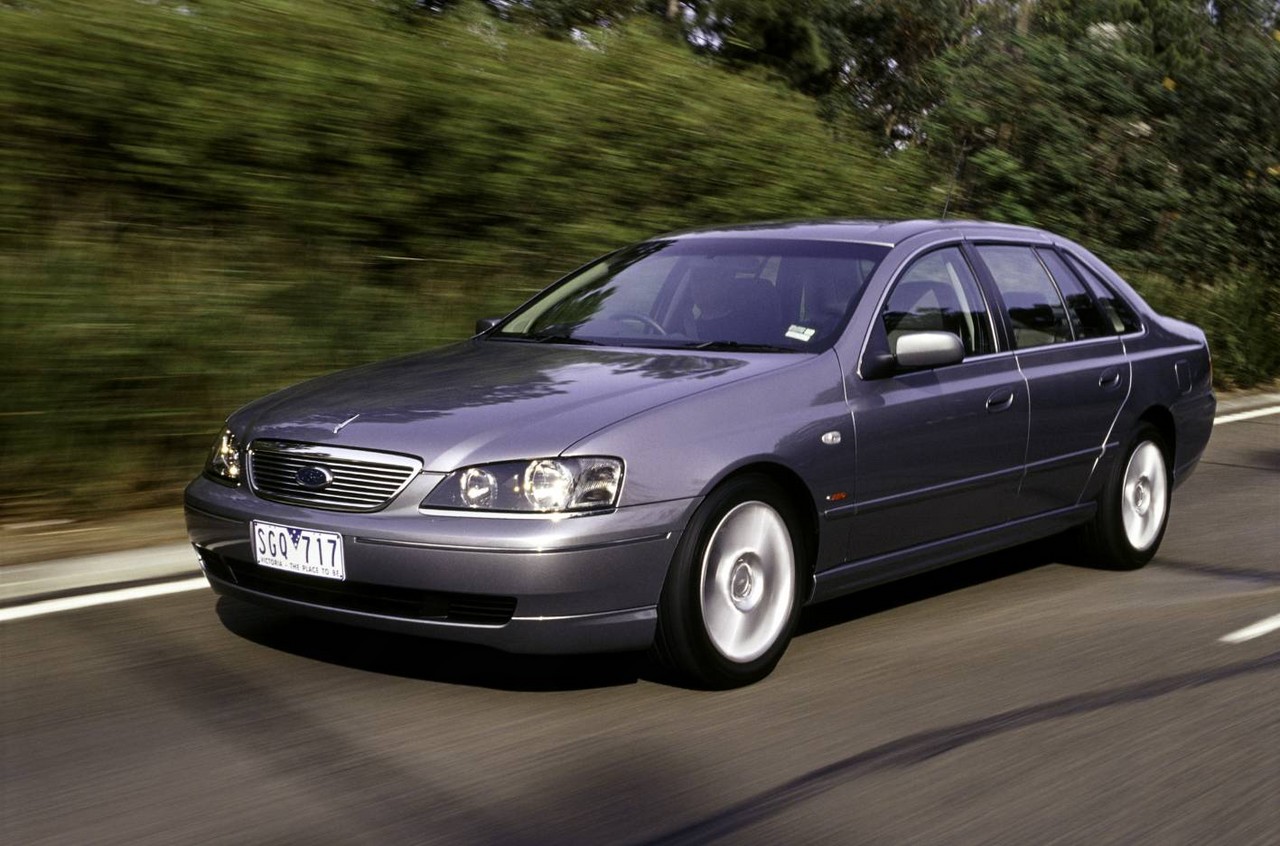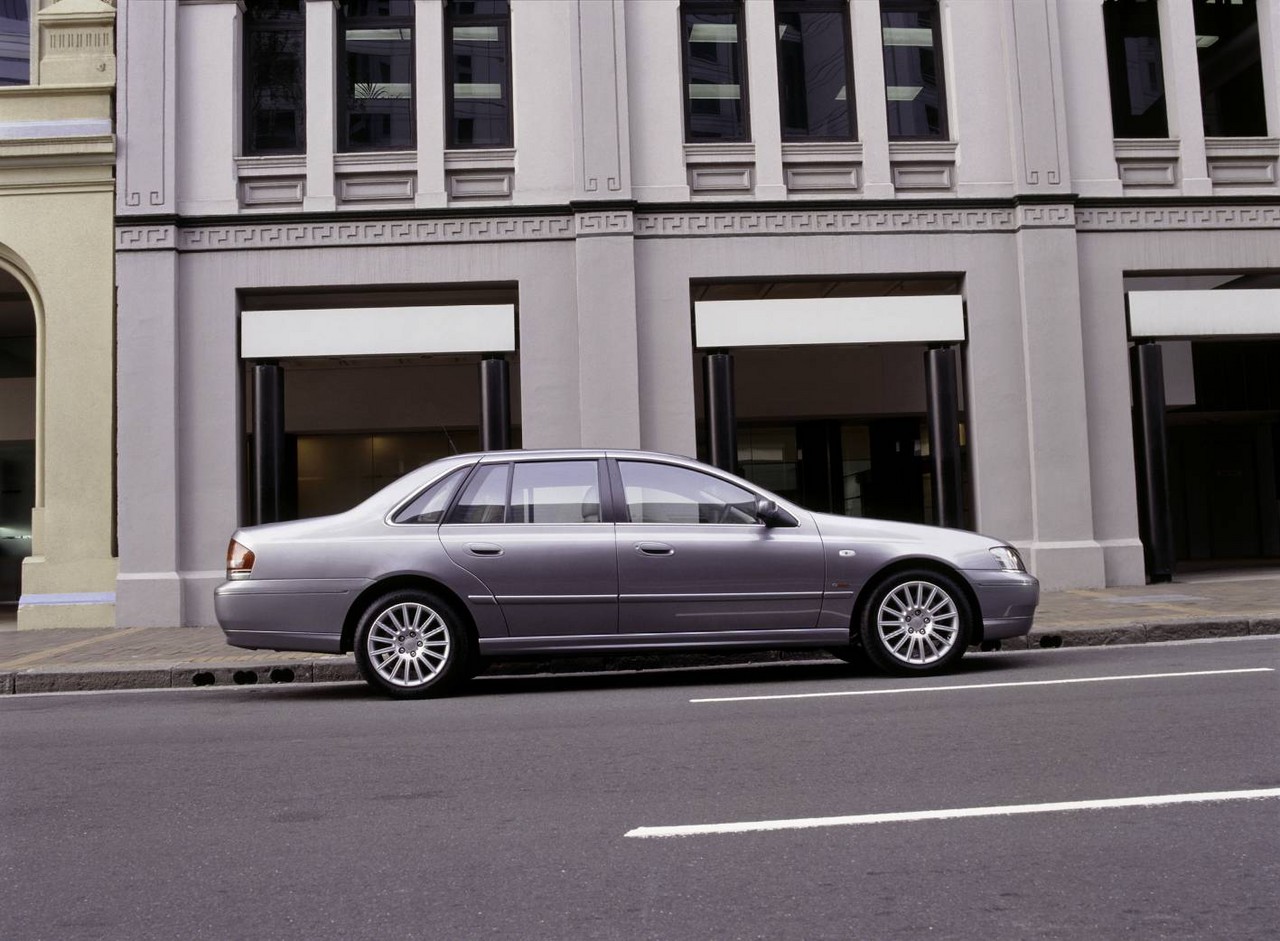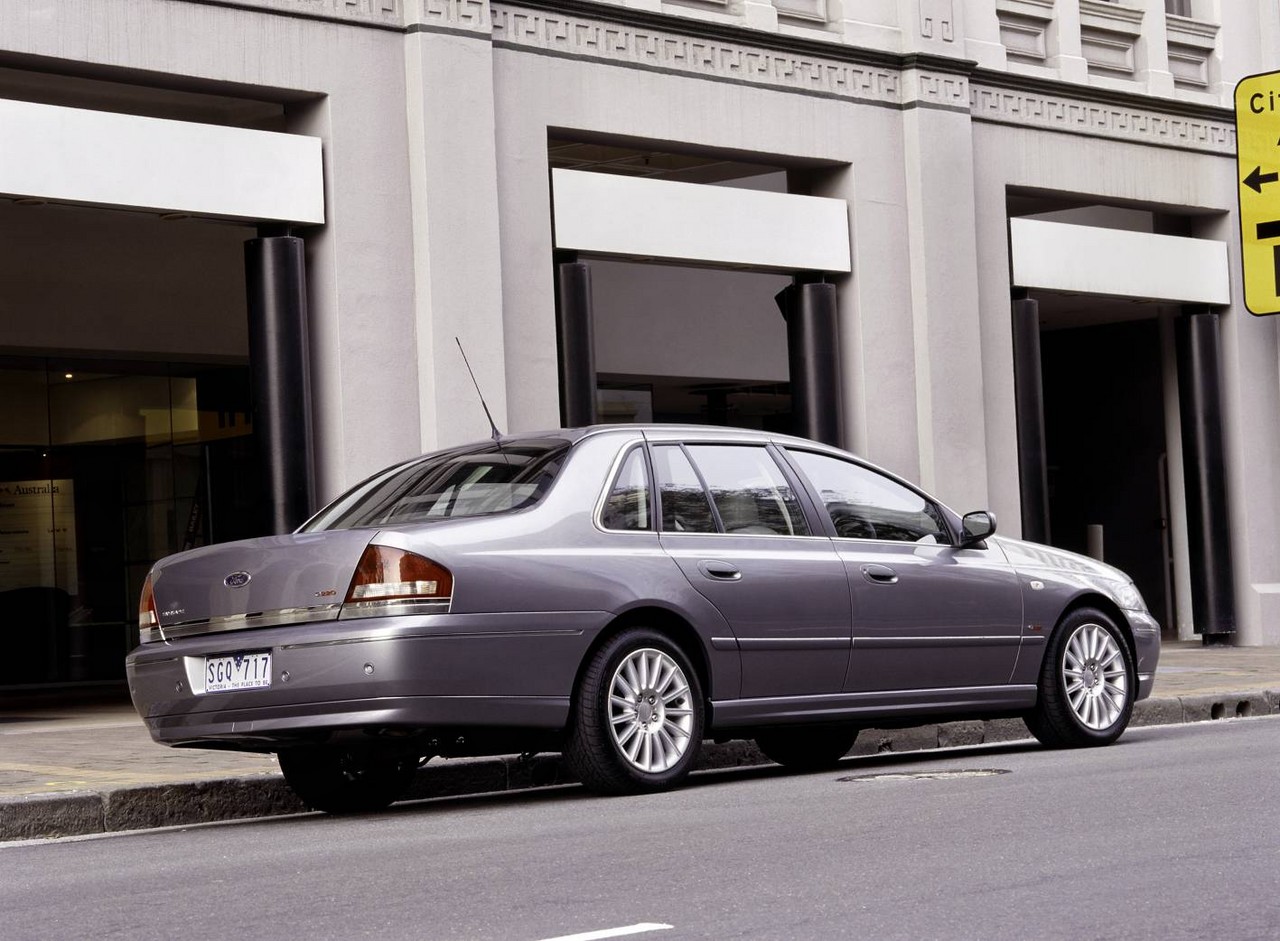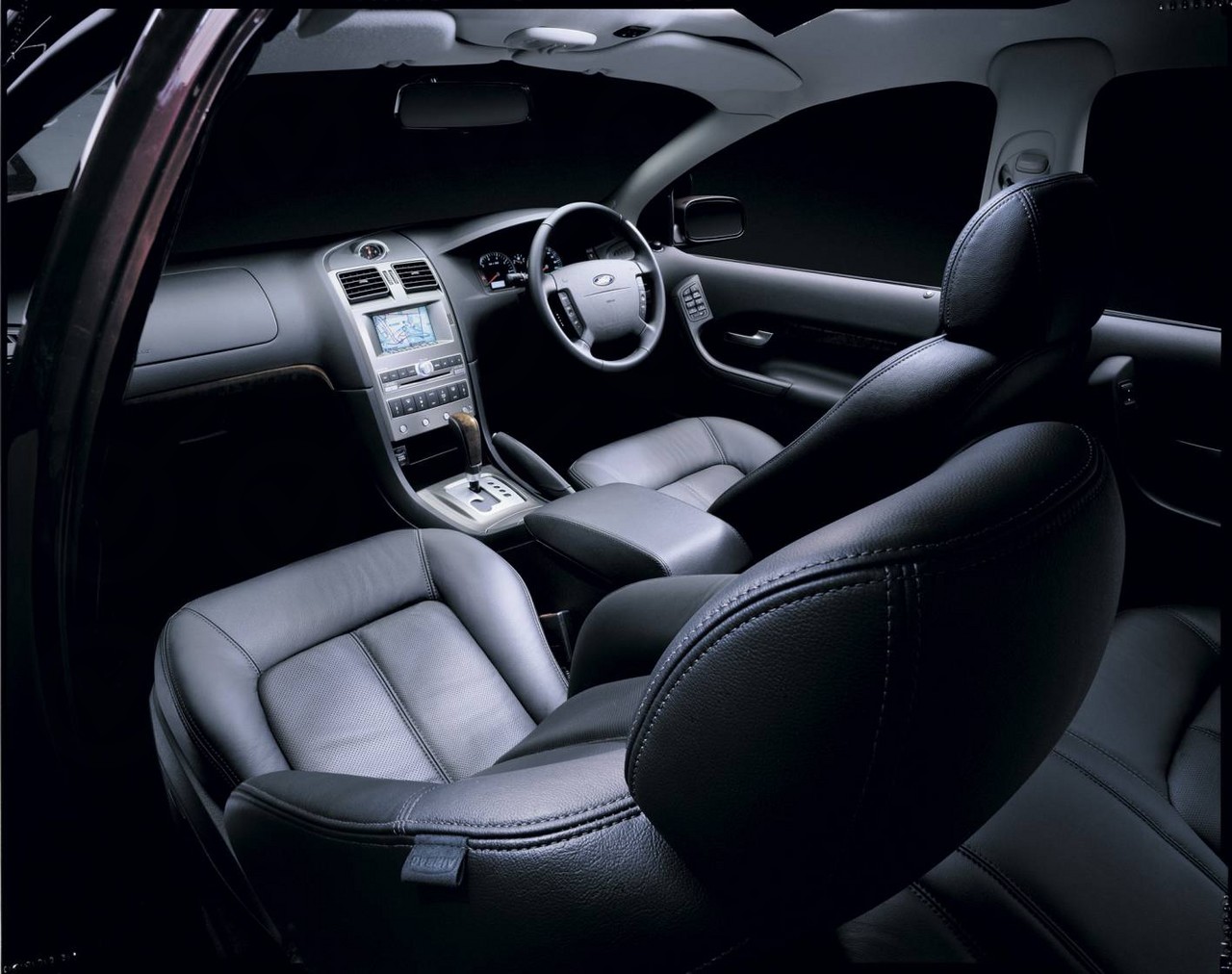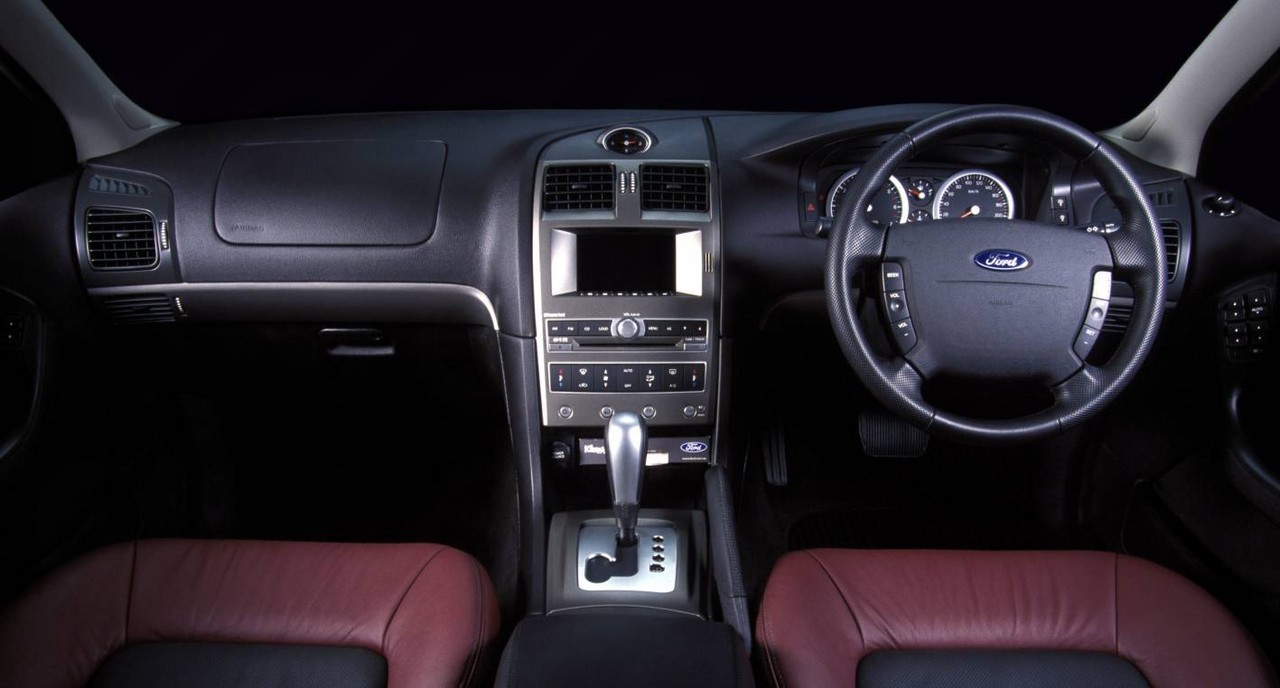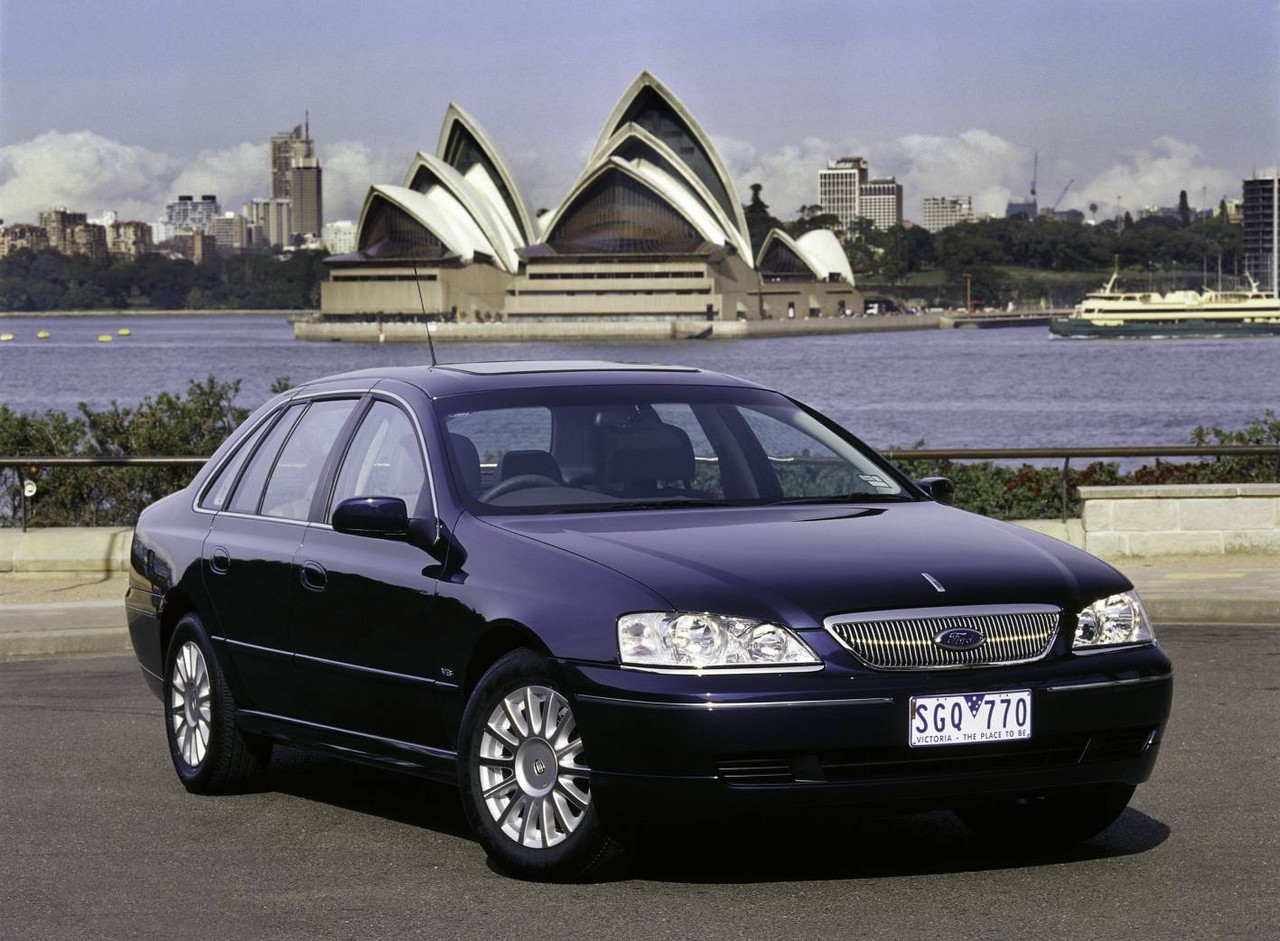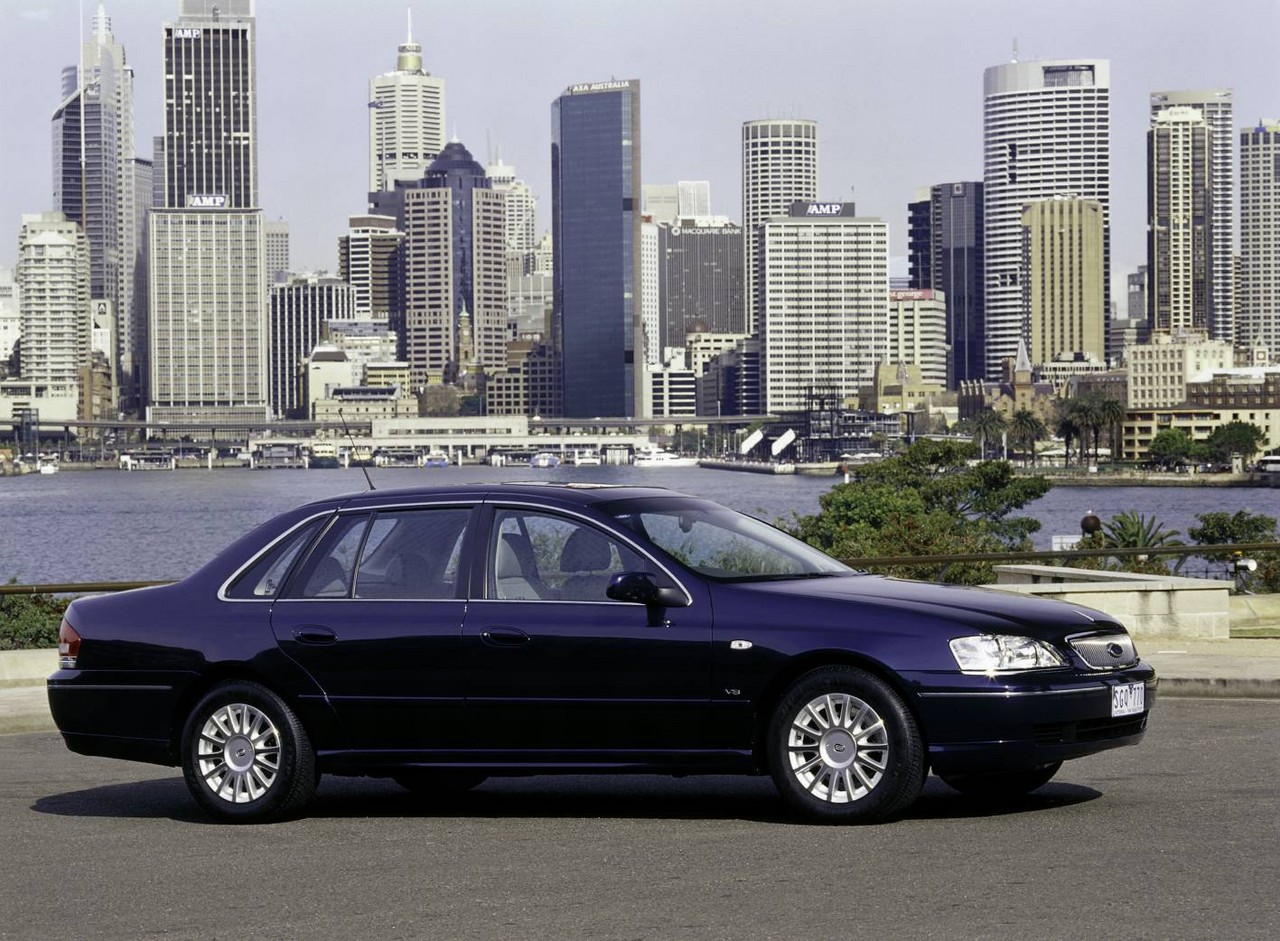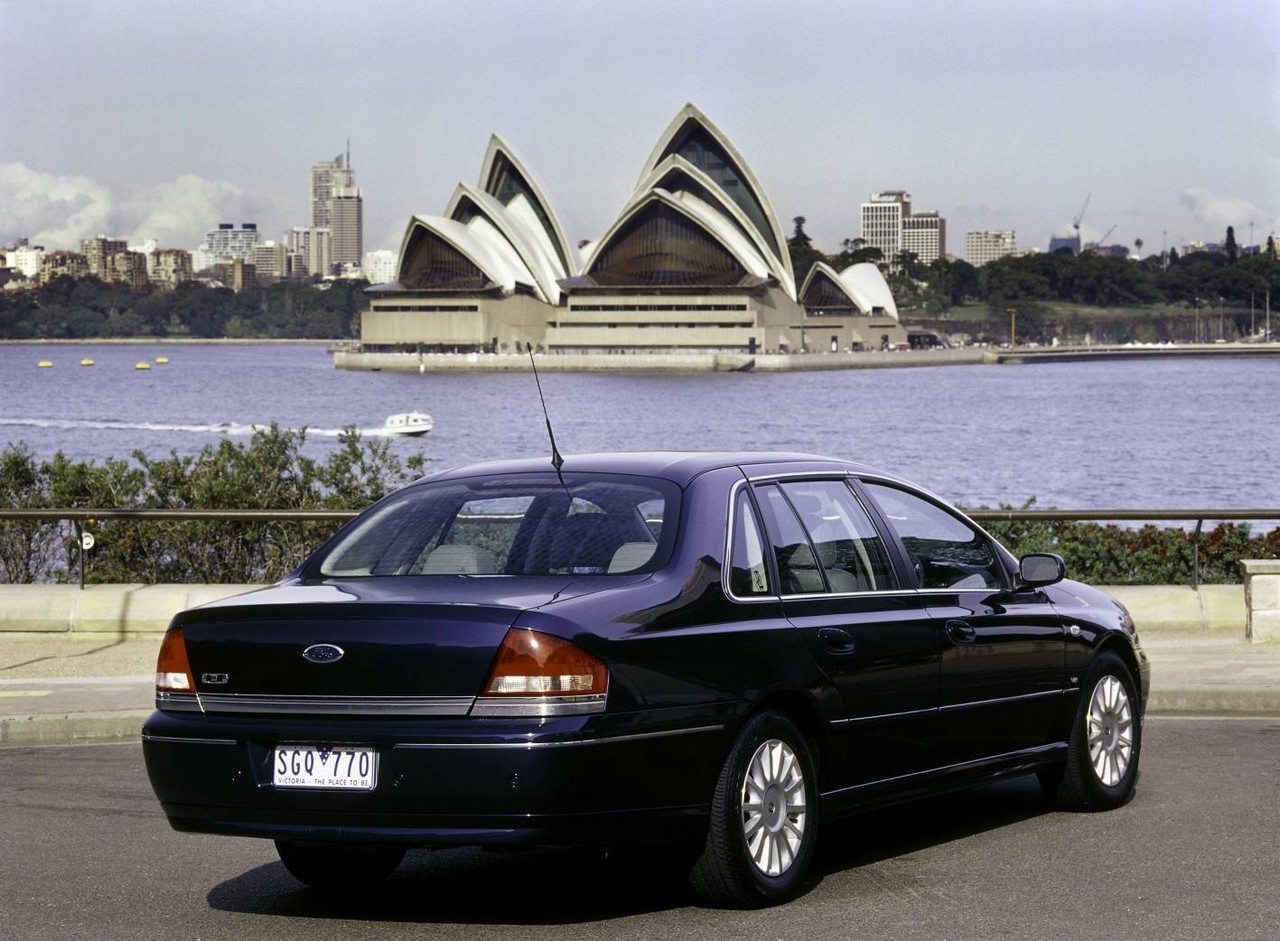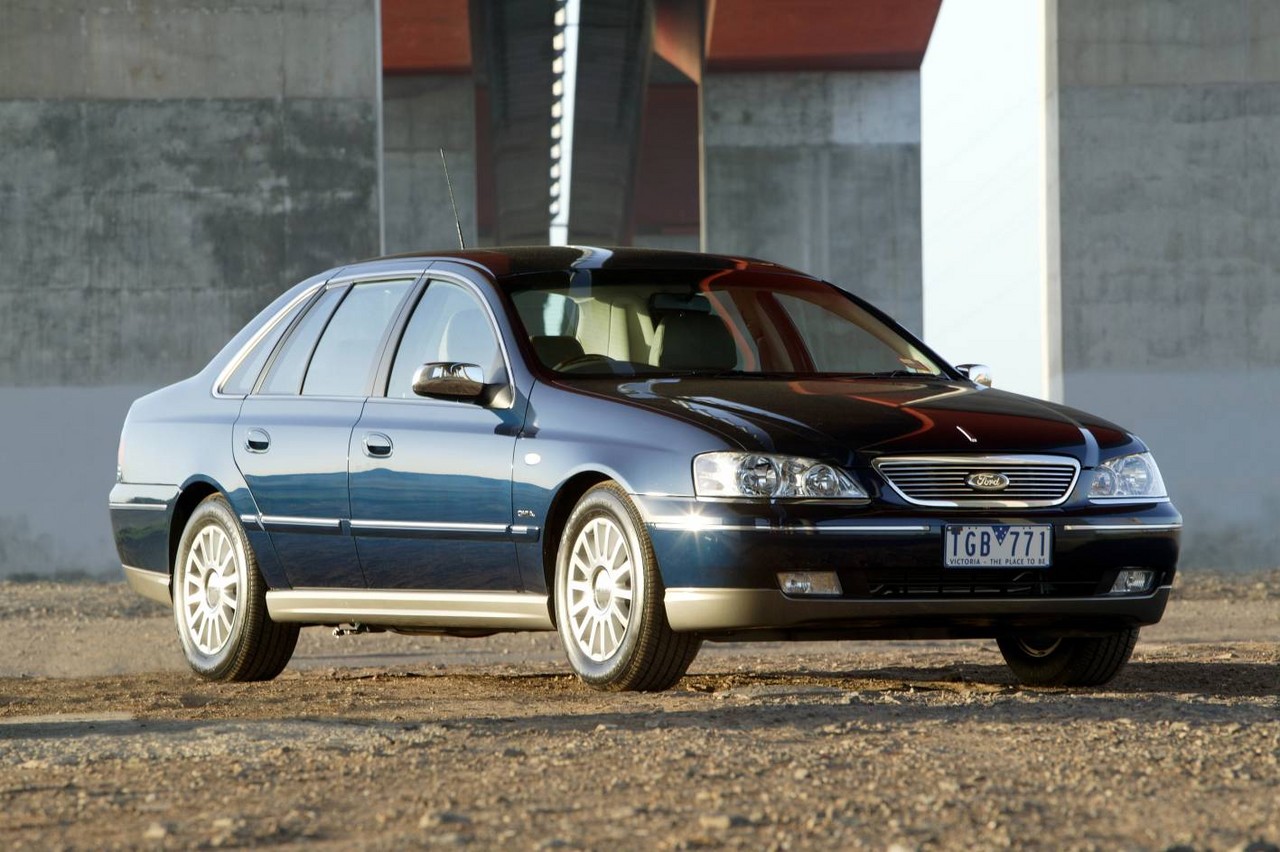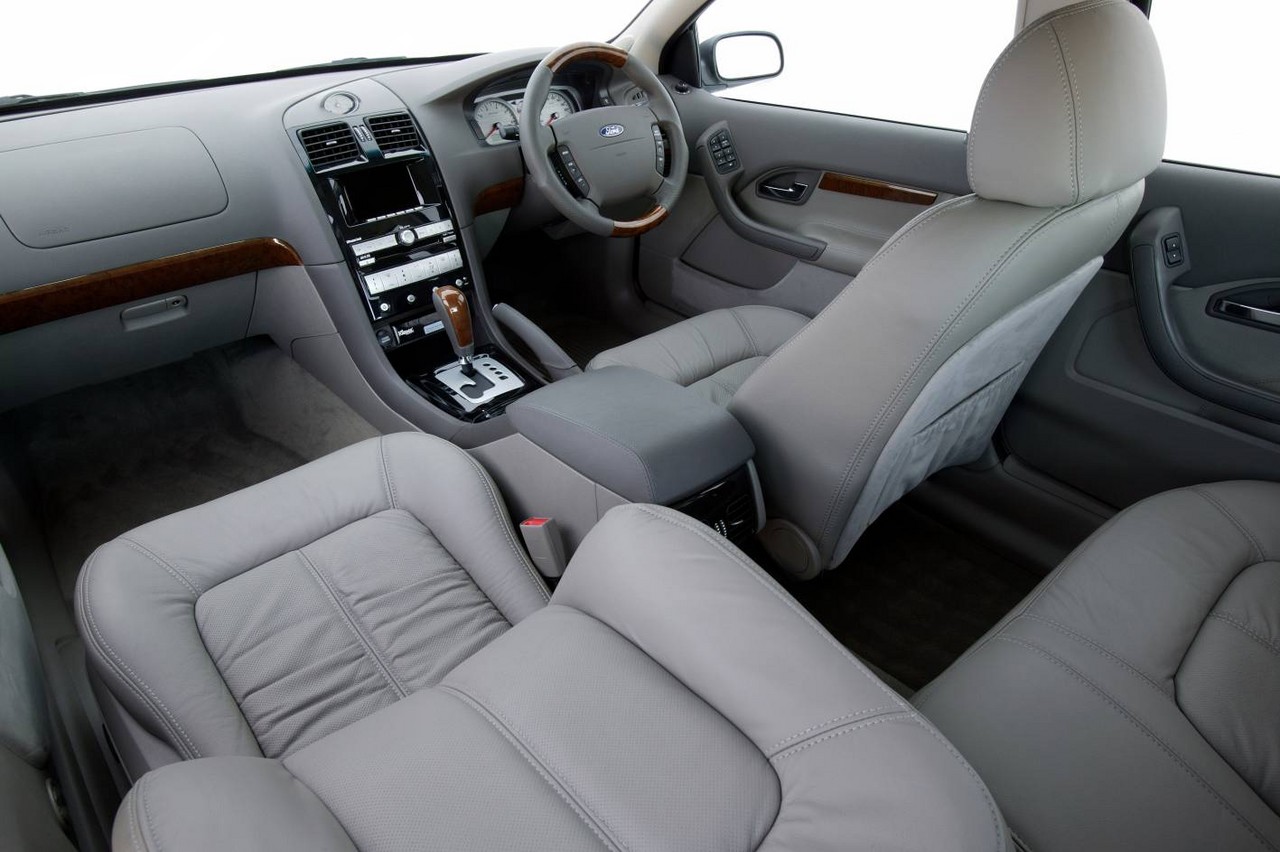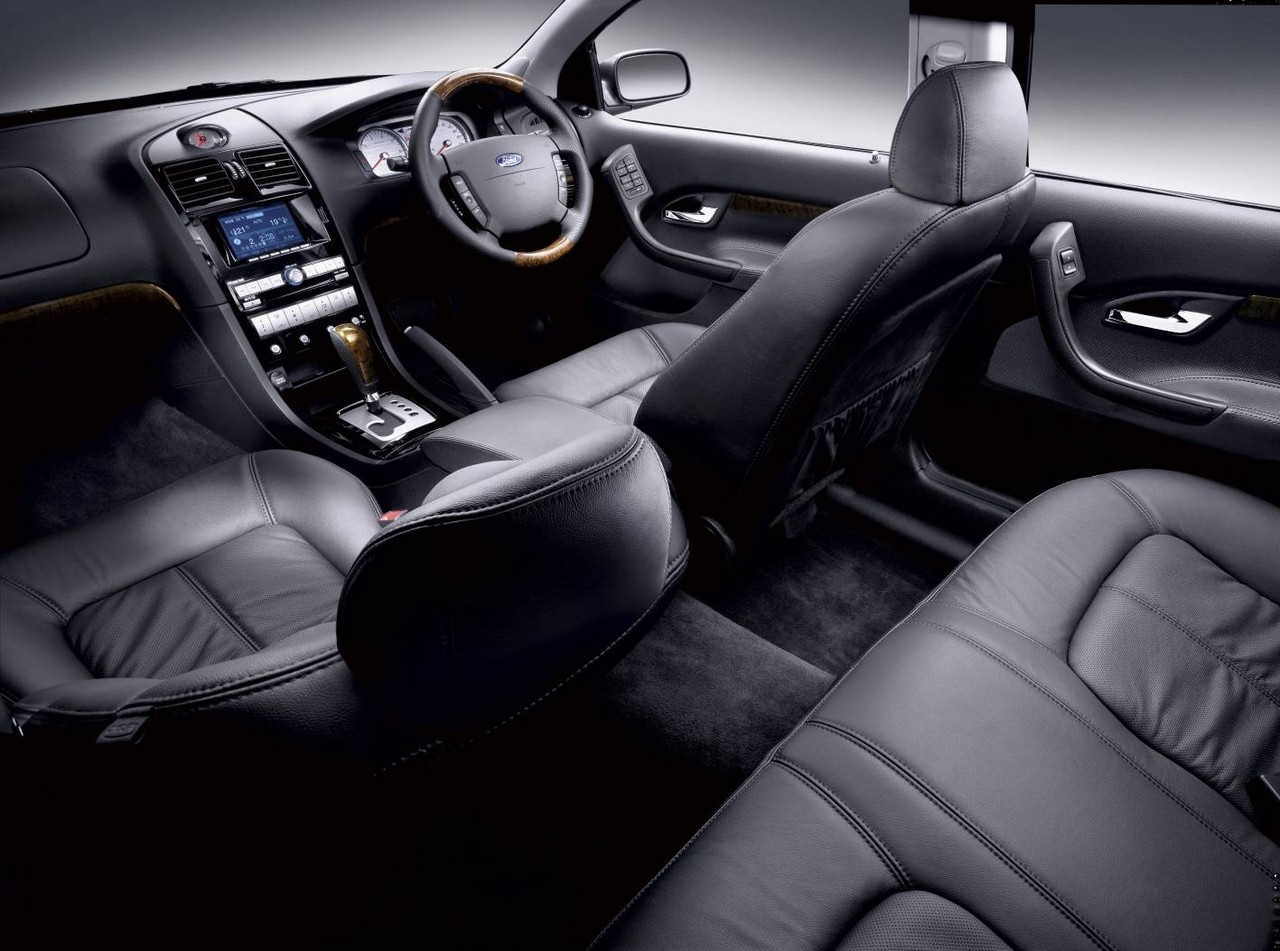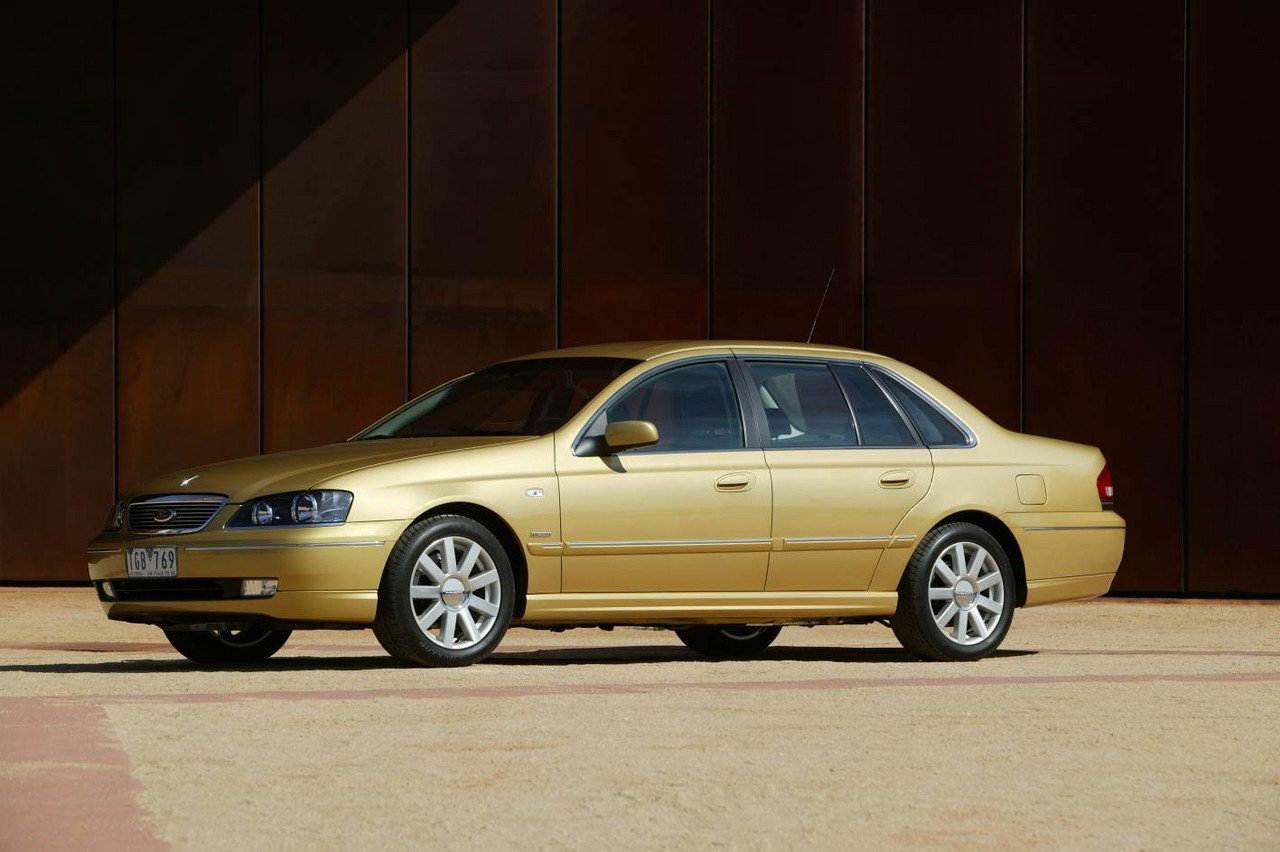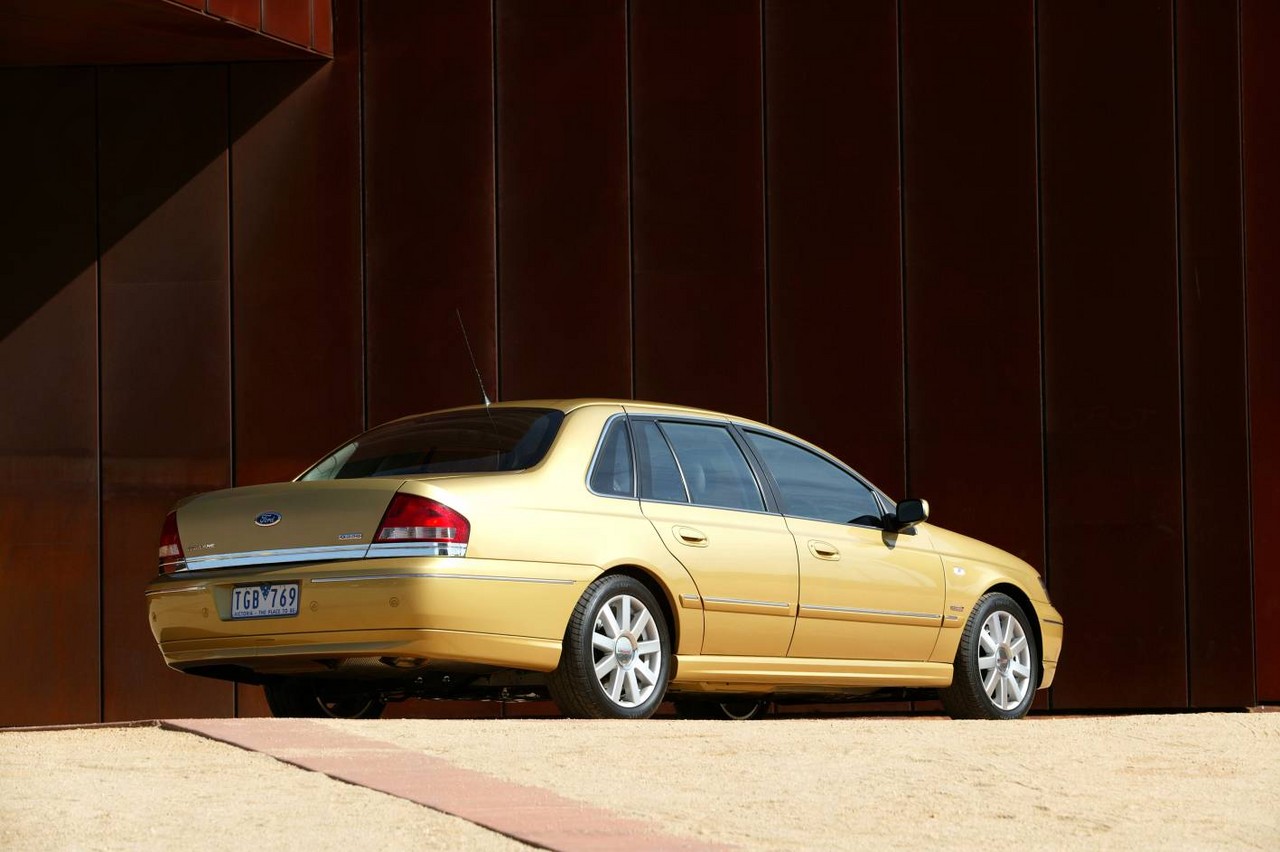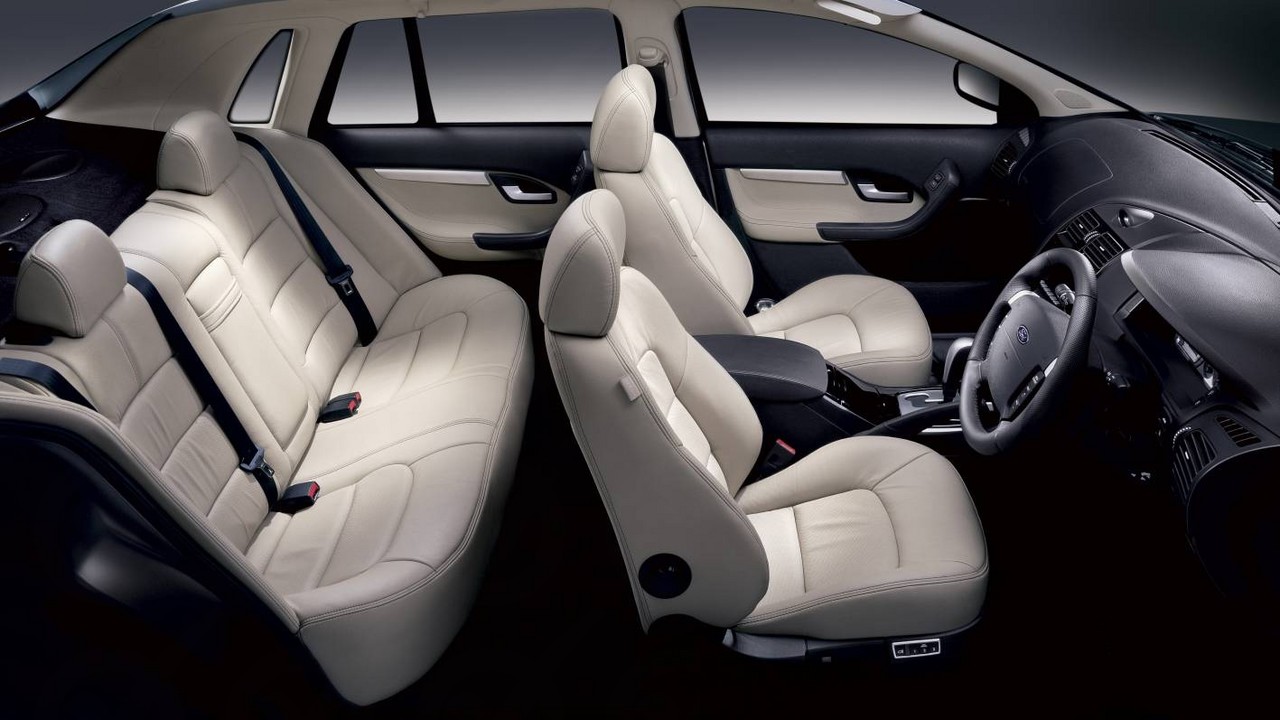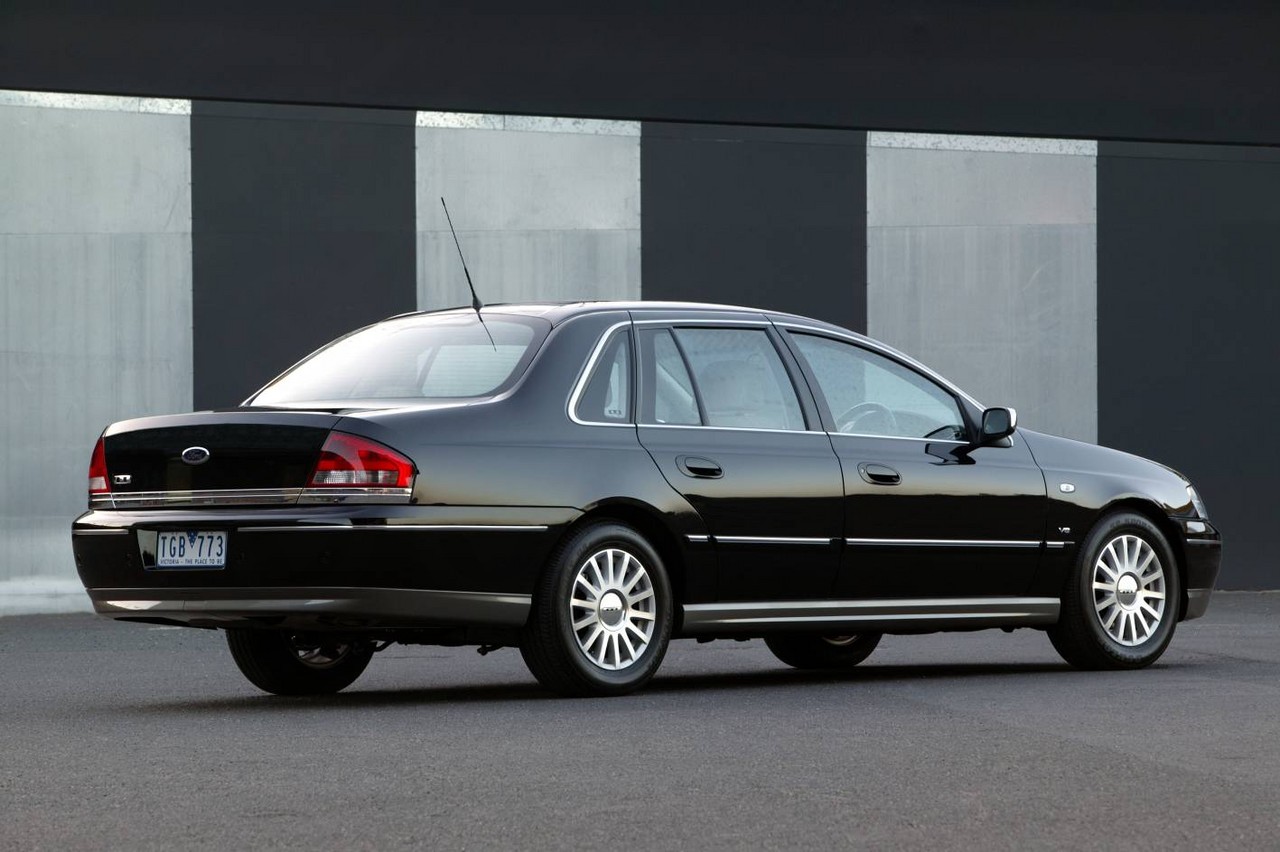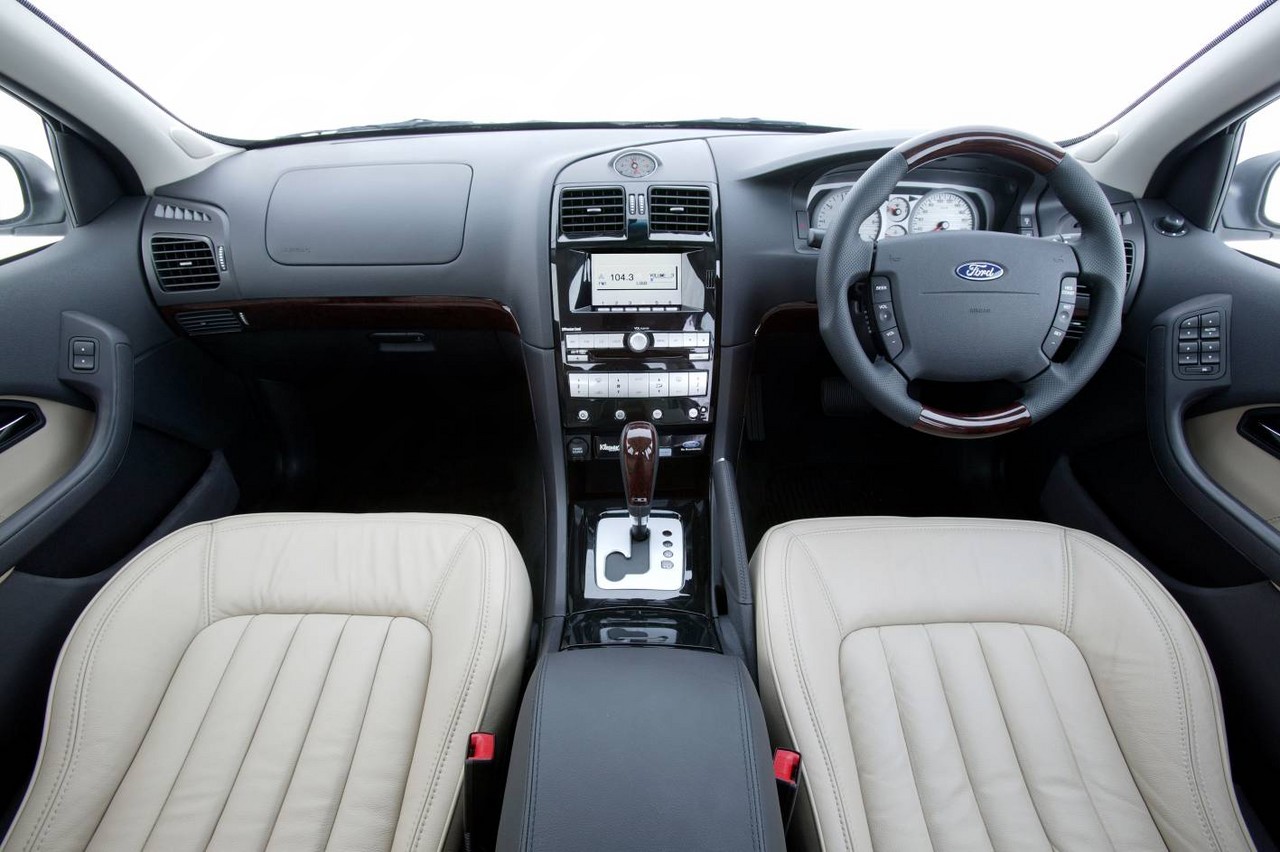
- Responsive 4.0-litre six-cylinder engine
- Accomplished ride/handling balance
- Comfortable and spacious interior
- Suspension, driveline and road noise
- Cast-iron 4.0-litre engines are heavy and not particularly fuel-efficient
- Low standard of interior fit and finish
- Overly sensitive steering
- Rear seat ambience hurt by position of rear door frame relative to seat
- Coolant lines for automatic transmission cooler susceptible to failure
Review: Ford BA.I Fairlane and LTD (2003-05)
Overview
Released in July 2003, the Ford BA Mark I (BA.I) Fairlane and LTD were long wheelbase sedans. Manufactured in Campbellfield, Victoria, the Ford BA Fairlane Ghia was available with 4.0-litre inline six cylinder or 5.4-litre V8 petrol engines, though the LTD and Fairlane Ghia G220 were solely available with the V8.
Engines: Barra 182 and Barra 220 V8
Of the engines,
- The 4.0-litre Barra 182 inline six-cylinder petrol engine had a cast iron block, a cast aluminium cylinder head, double overhead camshafts (DOHC, simplex chain-driven), dual infinitely variable camshaft adjustment (within a 60 degree range), four valves per cylinder, Duratec-style finger followers, a dual resonance inlet manifold, coil-on-plug ignition and a compression ratio of 9.7:1. Compared to its Intech predecessor, changes for the Barra six cylinder engine included a new cylinder head (50 per cent stiffer than its predecessor), forged camshafts (previously cast iron), new combustion chambers, port design, a single chain drive for the camshafts, electronic ‘drive by wire’ throttle control, internal exhaust gas recirculation, a crank-mounted oil pump, new knock sensors (for improved performance on premium unleaded fuel) and an upgraded Powertrain Control Module (PCM). The rev limit was also raised to 6000 rpm (previously 5700 rpm); and,
- Manufactured at Ford’s Windsor plant in Canada, the 5.4-litre Barra 220 V8 engine had a cast iron block, a cast aluminium cylinder head, sintered connecting rods, a single overhead camshaft (SOHC), variable camshaft timing (over 60 degrees relative to the crankshaft), three valves per cylinder (two intake, one exhaust), roller finger followers, coil on plug ignition and a compression ratio of 9.7:1. Compared to its 4.9-litre predecessor, changes included a stiffer block, reshaped pistons (with longer side skirts), magnesium cam covers, electronic throttle control, internal exhaust gas recirculation and failsafe-cooling protection (previously limited to inline six cylinder engines).
Transmissions
The Ford BA Fairmont had four-speed BTR M93LE and BTR M97LE automatic transmissions for the six- and eight-cylinder engines, respectively. For the BA range, changes for the automatic transmissions included a higher contact ratio gear set, a new design alloy plate (finned) transmission oil cooler and upgrades for the valve body, pump assemblies and torque converters.
Development and dimensions
Compared to the AU Fairlane and LTD , the BA Fairlane and LTD had a significantly stiffer bodyshell and benefited from other developments introduced in the BA Falcon range such as:
- Independent rear suspension;
- A new two-piece drive shaft with a constant velocity (CV) joint at the differential;
- A new alloy cross member under the transmission with alloy mountings;
- A stainless steel exhaust system as standard;
- A stiffer steering column and revised steering gear;
- New hydraulic engine mounts; and,
- New insulating foam between the body and carpets.
Relative to the AU Fairlane and LTD , the BA Fairlane and LTD were 13 mm longer (at 5153 mm), 10 mm narrower (1862 mm), 45 mm taller (1493 mm) and had the same length wheelbase (2919 mm). As a result of its stronger structure and new rear suspension (detailed below), kerb mass for the six-cylinder Fairlane Ghia increased by 94 kg.
Suspension
The Ford BA Fairlane and LTD had double wishbone front suspension and independent rear suspension (IRS) which had three control arms:
- A forged upper control arm;
- A stamped front lower control arm; and,
- A stamped rear lower control arm.
Each control arm had a cross axis ball joint on the wheel assembly end and was attached to the subframe and knuckle. Furthermore, the ‘Control Blade’ was a stamped trailing arm which provided lateral support and acted as a vertical pivot point.
The Fairlane G220 had stiffer front springs (35 N/mm) than the Fairlane Ghia and LTD (32.5 N/mm), and a slightly heavier steering rate.
| Model | Variant | Engine | Trans. | Peak power | Peak torque |
|---|---|---|---|---|---|
| Fairlane | Ghia | 4.0-litre Barra 182 petrol I6 | 4sp auto | 182 kW at 5000 rpm | 380 Nm at 3250 rpm |
| Ghia, G220 |
5.4-litre Barra 220 petrol V8 | 4sp auto | 220 kW at 4750 rpm | 470 Nm at 3250 rpm | |
| LTD | N/A | 5.4-litre Barra 220 petrol V8 | 4sp auto | 220 kW at 4750 rpm | 470 Nm at 3250 rpm |
Safety equipment
Standard safety equipment for the Ford BA.I Fairlane and LTD included dual front airbags, front side airbags (with head protection), ABS, electronic brake force distribution, traction control and front seatbelts with pretensioners and load limiters.
Brakes
The Ford BA Fairlane and LTD had 298 mm by 28 mm ventilated front brake discs with twin-piston callipers rotors and 303 mm by 16mm solid rear discs with single piston callipers.
Features: Fairlane Ghia and G220
Standard features for the Ford BA Fairlane Ghia included 16-inch alloy wheels (17-inch wheels for the V8 models), an 11 speaker 260 watt sound system with six-disc in-dash CD player, dual zone climate control air conditioning, leather seats, six-way power adjustable front seats with driver’s seat memory settings, cruise control, steering wheel audio controls, rear parking sensors, a leather-wrapped steering wheel and gearshift, remote central locking, 60/40 split and folding rear seat, power mirrors with memory settings, power windows, a tilt and reach adjustable steering wheel, warm brown maple interior highlights, a trip computer and an immobiliser.
The Fairlane G220 was distinguished by its 17-inch ‘Elegance’ alloy-wheels with its firmer suspension and lower profile (225/50) tyres, ‘Redline’ leather seats with warm charcoal perforated leather inserts, perforated leather-wrapped steering wheel with brushed aluminium style inserts, perforated leather-wrapped gearshift with satin inserts and ebony headlight bezels.
Features: LTD
Compared to the Fairlane Ghia, the Ford BA LTD featured 16-inch alloy wheels, a power sunroof, ten-way power adjustable front seats with driver’s seat memory settings, bolstered rear seats, electrochromic (auto-dimming) rear view mirror, embroidered floor mats, woodgrain gear shift and rich red maple interior highlights.
Related links
Review: Ford BA.II Fairlane and LTD (2005)
Overview
Released in March 2005, the BA Mark II (BA.II) was a minor update for the Fairlane and LTD. The BA.II Fairlane and LTD introduced chrome side strips and rear applique; the Fairlane Ghia and LTD also received firmer suspension settings, chromed wing mirror scalps and two-tone paint finishes.
| Model | Variant | Engine | Trans. | Peak power | Peak torque |
|---|---|---|---|---|---|
| Fairlane | Ghia | 4.0-litre Barra 182 petrol I6 | 4sp auto | 182 kW at 5000 rpm | 380 Nm at 3250 rpm |
| Ghia, G220 |
5.4-litre Barra 220 petrol V8 | 4sp auto | 220 kW at 4750 rpm | 470 Nm at 3250 rpm | |
| LTD | N/A | 5.4-litre Barra 220 petrol V8 | 4sp auto | 220 kW at 4750 rpm | 470 Nm at 3250 rpm |
Features
Both the BA.II Fairlane Ghia and G220 were fitted with an eight-way power adjustable driver’s seat (with memory function) and scuff plates. The Fairlane Ghia also featured ‘China Beige’ leather, black onyx ICC fascia and console, and a ‘Rhui Maple’ woodgrain and leather-wrapped steering wheel. The G220 was fitted with seven-spoke alloy wheels and a leather-wrapped sports steering wheel.
Changes for the BA.II LTD included a Stone Maple woodgrain and leather-wrapped steering wheel and buyers had the choice of either a DVD player with rear screen or a power sunroof.
Related links
